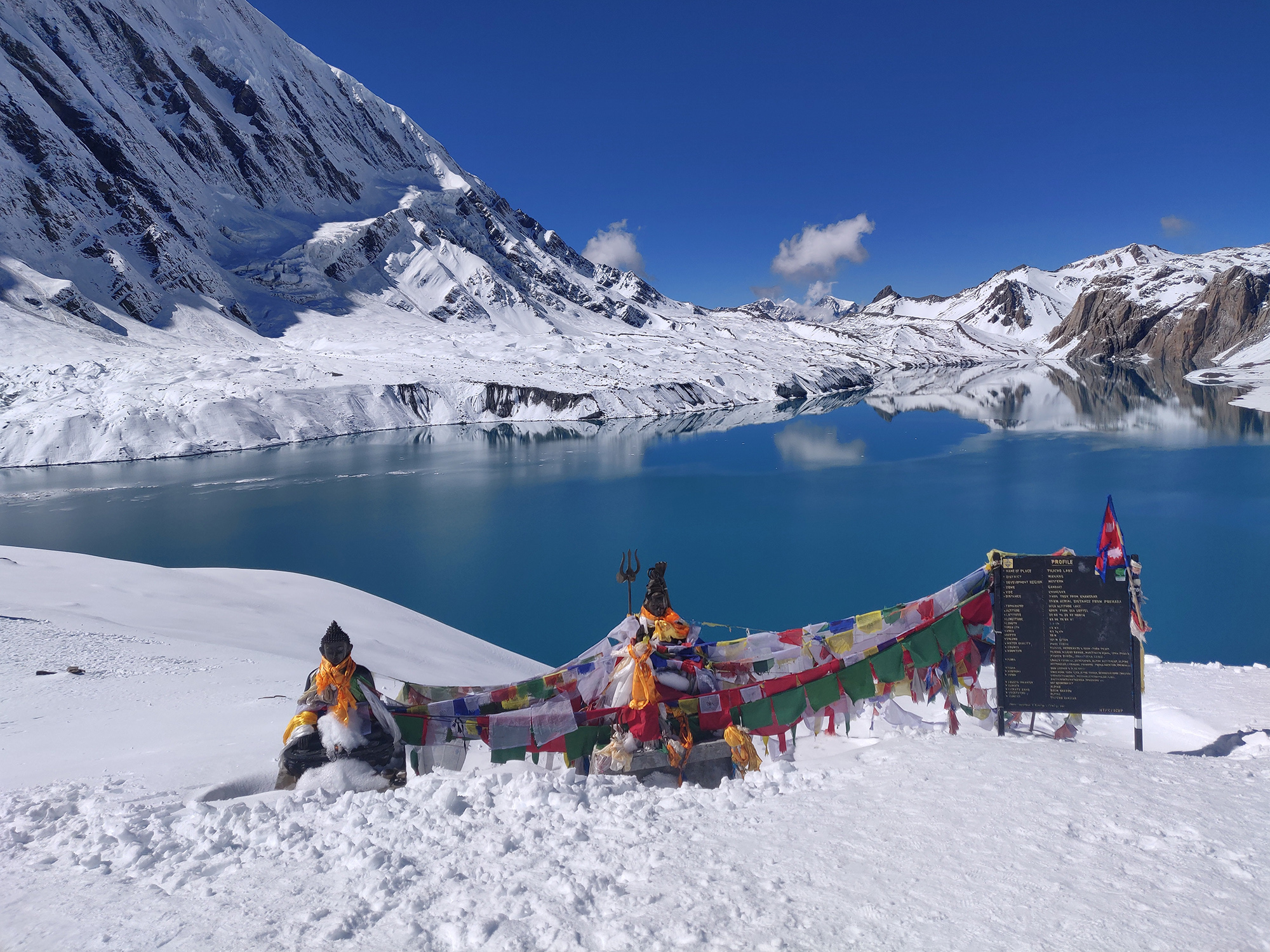Upper Dolpo: A Remote Himalayan Sanctuary
Nestled in the far-flung reaches of Northwestern Nepal, Upper Dolpo stands as a hidden gem in the Himalayas, offering an extraordinary trekking experience for those seeking seclusion and cultural richness. Renowned for its remote and untouched landscapes, this region has preserved its ancient Tibetan Buddhist culture and traditions, providing trekkers with a journey back in time.
The trek to Upper Dolpo begins with a flight to Juphal, and from there, the trail winds through high mountain deserts, alpine meadows, and traditional Tibetan-style villages. The Shey Phoksundo National Park, with its diverse flora and fauna, adds a touch of natural grandeur to the journey. Trekkers may encounter the elusive blue sheep, Himalayan tahr, and snow leopards as they traverse the rugged terrain.
One of the trek’s highlights is the enchanting Phoksundo Lake, a deep turquoise gem surrounded by barren hills and the majestic Kanjiroba Himal. The lake is not only a visual spectacle but also holds cultural significance for the local Dolpo-pa people. The trek offers opportunities to explore ancient monasteries, stupas, and interact with the friendly locals, predominantly followers of Bon Buddhism.
Upper Dolpo’s remoteness and restricted access ensure a unique cultural and natural sanctuary. Villages like Dho Tarap, Ringmo, and Shey Gompa provide a glimpse into a way of life that has endured for centuries, characterized by traditional stone houses, prayer flags, and nomadic herding practices.
The challenging high passes, such as Kang La and Shey La, reward trekkers with panoramic views of the surrounding peaks, including Dhaulagiri and Crystal Mountain. The mystical landscapes and cultural authenticity make Upper Dolpo an unparalleled destination for those in search of a transformative and off-the-beaten-path Himalayan trekking experience.










